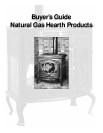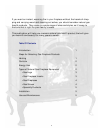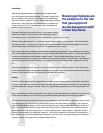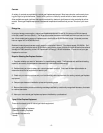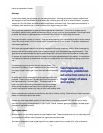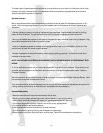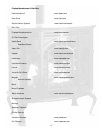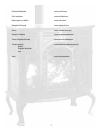Special offers from our partners!

Find Replacement BBQ Parts for 20,308 Models. Repair your BBQ today.

I n t ro d u c t i o n
Natural gas fireplaces, stoves, fireplace inserts and gas log sets
b u r n more cleanly than wood fireplaces. This means no ash build-
up, no creosote in chimneys and no sparks or flying embers that
could burn holes in carpet or furn i t u r e. Natural gas hearth pro d u c t s
a r e so clean, in fact, that they can be used anytime in areas of the
c o u n t r y that have "no burn" regulations for wood fireplaces and
stoves to reduce air pollution.
Gas hearth equipment can warm the home in two ways: radiant
heat and convection heat. Convection takes advantage of warm
a i r ’s tendency to rise -- the warm air warms surfaces as it moves through a room.
Radiant heating doesn’t warm air. Like the sun’s rays, it warms objects in its direct path. The heated objects --
like people or walls -- can also give off radiant heat to cooler materials. Conventional fireplaces, for example,
give off radiant heat, while central "forced-air" furnaces use convection heating.
Many natural gas hearth products are classified as "decorative" gas appliances. That means that they are basi-
cally used for appearance, although they can provide radiant heat to the room they are in. Other gas fire p l a c e s
and stoves are classified as wall heaters or space heaters. They have added technology, such as a heat
exchanger and blower fan, to heat and move air through the room or home. If you want your natural gas fire-
place to be a significant source of heating in your home, be sure you choose one that is designed to do that
job.
Natural gas fireplaces are the exception to the rule that gas equipment should always burn with a clean blue
flame. Special technology developed for fireplaces lets the gas burn with a yellow flame that looks more like a
wood fire, and is almost as clean and efficient as the traditional blue flame.
Ve n t i n g
As with all natural gas equipment, the gas burner in hearth products produces some combustion bypro d u c t s ,
primarily water vapor and carbon dioxide, the same elements we exhale when we breathe. So with some gas
f i r eplace equipment, venting is re q u i r ed. Other, very high-efficiency equipment may not re q u i re outside vent-
ing.
Note: Some state and local building codes do not allow unvented gas equipment to be used. Check with your
h e a r th products dealer or your local building code officials before purchasing unvented gas equipment.
With products that re q u i r e venting, there are many possibilities. If you are installing gas equipment in an exist-
ing fireplace, you can use the chimney that’s already there to vent combustion byproducts. If you choose a
new self-contained gas fireplace, it can be vented through the roof, using a traditional chimney or metal vent
pipe, or it can be vented directly through a side wall to the outdoors. These "direct vent" fireplaces give you
many options for installing the equipment -- in corners, against walls, under windows, in between rooms or
v i r tually anywhere else your imagination leads you. You can find mantels and "surrounds" to complement
your decor, or you can let the fireplace set the style for your room. And if you prefer the look of a wood-burn-
ing stove, you can find a gas stove that closely resembles one.
- 1 -
Natural gas fireplaces are
the exception to the ru l e
that gas equipment
should always burn with
a clean blue flame.



